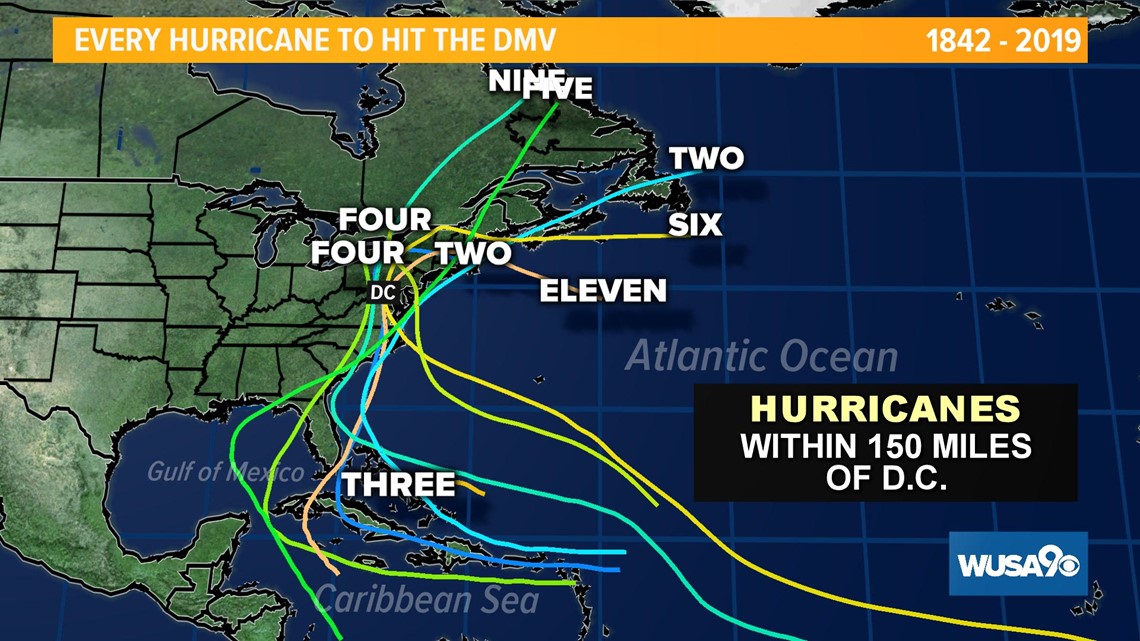

This still places parts of the Gulf and East coasts at risk for a landfalling storm to occur. The western Caribbean Sea, the eastern Gulf of Mexico and the western and central Atlantic Ocean are the areas most likely to have a tropical storm or hurricane in October. Most areas of the Atlantic Basin remain open for tropical development, but the Cabo Verde season fades away, so a lot of the activity tends to shift westward. Tropical activity gradually starts to wane in October, but it can still be an active month for tropical storms and hurricanes to form, especially the beginning of the month.

The analysis is based on data from the 72-year period from 1950 to 2021 but normalized to 100 years. The data are shown as the combined number of tropical depressions, tropical storms and hurricanes whose centers pass within 125 miles of a point on the map during a 100-year period. This map shows where tropical cyclone activity tends to occur during October. WATER FROM HURRICANES, TROPICAL STORMS KILLS MORE IN U.S. 10.Ĭabo Verde hurricanes are common in September, and some of them make the 3,500-mile-long journey from the eastern tropical Atlantic Ocean toward the islands of the Caribbean or the United States coastline, while others curve northwestward toward Bermuda or the open ocean.Īnother hot spot for tropical storms and hurricanes to form is the Gulf of Mexico, particularly the northern Gulf of Mexico to the south of Louisiana and Mississippi, as water temperatures in the Gulf reach the highest levels of the year. More real estate is available for tropical development in September than any other month, so it's no surprise that hurricane season peaks on Sept. September is the most active month of the Atlantic hurricane season and when most hurricanes occur. This map shows where tropical cyclone activity tends to occur during September. WHAT TO DO WHEN HURRICANE OR TROPICAL STORM WATCHES AND WARNINGS ARE ISSUED FOR YOUR TOWN September The Gulf of Mexico continues to be a breeding ground for tropical storms and hurricanes in August as well. Hurricanes that develop to the west of Africa are called Cabo Verde hurricanes, named after the island country a few hundred miles west of continental Africa. From there, it can either continue westward into the Caribbean or curve northwestward toward the Bahamas, eastern U.S., Bermuda or the open ocean. If a tropical wave spawns a tropical storm, it often moves westward across the tropical Atlantic Ocean in the direction of the Lesser Antilles. The tropics turn far more active in August when nearly the entire Atlantic Basin becomes available for tropical development, including the so-called Main Development Region between Africa and the Lesser Antilles.įrequent tropical waves in warm ocean waters emerging off western Africa are seeds for tropical development in the Main Development Region.

This map shows where tropical cyclone activity tends to occur during August.
HURRICANE TRACK MAPS HISTORY HOW TO
HERE'S HOW TO PREPARE FOR HURRICANE SEASON NOW August However, the western Caribbean Sea turns less active in July because cold fronts become much less frequent in that region.

Tropical storms and hurricanes most frequently occur off the Southeast and mid-Atlantic coasts, but they can also roam the Atlantic Basin anywhere between the northern Bahamas and Atlantic Canada, in the Gulf of Mexico, the eastern Caribbean Sea and the western tropical Atlantic (to the east of the Lesser Antilles). July is generally another slow month in the tropics before the Atlantic hurricane season ramps up in August and September, but there is a slight increase in activity as additional real estate for tropical development opens up. This map shows where tropical cyclone activity tends to occur during July.


 0 kommentar(er)
0 kommentar(er)
